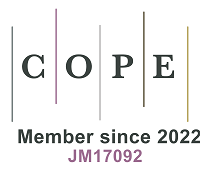REFERENCES
1. Dockery, D. W.; Pope, C. A.; Xu, X.; et al. An association between air pollution and mortality in six U.S. cities. N. Engl. J. Med. 1993, 329, 1753-9.
2. Vedal, S.; Han, B.; Xu, J.; Szpiro, A.; Bai, Z. Design of an air pollution monitoring campaign in beijing for application to cohort health studies. Int. J. Environ. Res. Public. Health. 2017, 14, 1580.
3. Özkaynak, H.; Baxter, L. K.; Dionisio, K. L.; Burke, J. Air pollution exposure prediction approaches used in air pollution epidemiology studies. J. Expo. Sci. Environ. Epidemiol. 2013, 23, 566-72.
4. Xie, X.; Semanjski, I.; Gautama, S.; et al. A review of urban air pollution monitoring and exposure assessment methods. IJGI. 2017, 6, 389.
5. Miller, K. A.; Siscovick, D. S.; Sheppard, L.; et al. Long-term exposure to air pollution and incidence of cardiovascular events in women. N. Engl. J. Med. 2007, 356, 447-58.
6. Eeftens, M.; Tsai, M.; Ampe, C.; et al. Spatial variation of PM2.5, PM10, PM2.5 absorbance and PMcoarse concentrations between and within 20 European study areas and the relationship with NO2 - Results of the ESCAPE project. Atmos. Environ. 2012, 62, 303-17.
7. Cyrys, J.; Eeftens, M.; Heinrich, J.; et al. Variation of NO2 and NOx concentrations between and within 36 European study areas: results from the ESCAPE study. Atmos. Environ. 2012, 62, 374-90.
8. Keller, J. P.; Olives, C.; Kim, S. Y.; et al. A unified spatiotemporal modeling approach for predicting concentrations of multiple air pollutants in the multi-ethnic study of atherosclerosis and air pollution. Environ. Health. Perspect. 2015, 123, 301-9.
9. Hoek, G.; Beelen, R.; de Hoogh, K.; et al. A review of land-use regression models to assess spatial variation of outdoor air pollution. Atmos. Environ. 2008, 42, 7561-78.
10. Han, B.; Hu, L.; Bai, Z. Human exposure assessment for air pollution. In: Dong G, editor. Ambient air pollution and health impact in China. Singapore: Springer; 2017. pp. 27-57.
11. Ma, X.; Zou, B.; Deng, J.; et al. A comprehensive review of the development of land use regression approaches for modeling spatiotemporal variations of ambient air pollution: a perspective from 2011 to 2023. Environ. Int. 2024, 183, 108430.
12. Bellinger, C.; Mohomed, J. M. S.; Zaïane, O.; Osornio-Vargas, A. A systematic review of data mining and machine learning for air pollution epidemiology. BMC. Public. Health. 2017, 17, 907.
13. Zhang, Z.; Zhang, G.; Su, B. The spatial impacts of air pollution and socio-economic status on public health: empirical evidence from China. Socio. Econ. Plan. Sci. 2022, 83, 101167.
14. Kuerban, M.; Waili, Y.; Fan, F.; et al. Spatio-temporal patterns of air pollution in China from 2015 to 2018 and implications for health risks. Environ. Pollut. 2020, 258, 113659.
15. Wu, Y.; Xu, J.; Liu, Z.; Han, B.; Yang, W.; Bai, Z. Comparison of population-weighted exposure estimates of air pollutants based on multiple geostatistical models in Beijing, China. Toxics 2024, 12, 197.
16. Chatzidiakou, L.; Krause, A.; Kellaway, M.; et al. Automated classification of time-activity-location patterns for improved estimation of personal exposure to air pollution. Environ. Health. 2022, 21, 125.
17. Yu, X.; Ivey, C.; Huang, Z.; et al. Quantifying the impact of daily mobility on errors in air pollution exposure estimation using mobile phone location data. Environ. Int. 2020, 141, 105772.
18. Liu, C.; Tai, M.; Hu, J.; et al. Application of smart devices in investigating the effects of air pollution on atrial fibrillation onset. NPJ. Digit. Med. 2023, 6, 42.
19. Li, A.; Zhang, Q.; Yao, Y.; et al. Higher ambient temperatures may worsen obstructive sleep apnea: a nationwide smartwatch-based analysis of 6.2 million person-days. Sci. Bull. 2024, 69, 2114-21.
20. Zhang, Q.; Wang, H.; Zhu, X.; et al. Air pollution may increase the sleep apnea severity: a nationwide analysis of smart device-based monitoring. Innovation 2023, 4, 100528.
21. Glasgow, M. L.; Rudra, C. B.; Yoo, E. H.; et al. Using smartphones to collect time-activity data for long-term personal-level air pollution exposure assessment. J. Expo. Sci. Environ. Epidemiol. 2016, 26, 356-64.
22. Bernasconi, S.; Angelucci, A.; Aliverti, A. A scoping review on wearable devices for environmental monitoring and their application for health and wellness. Sensors 2022, 22, 5994.
23. Park, Y. M.; Kwan, M. P. Individual exposure estimates may be erroneous when spatiotemporal variability of air pollution and human mobility are ignored. Health. Place. 2017, 43, 85-94.
24. Yu, X.; Stuart, A. L.; Liu, Y.; et al. On the accuracy and potential of Google Maps location history data to characterize individual mobility for air pollution health studies. Environ. Pollut. 2019, 252, 924-30.
25. Yu, H.; Russell, A.; Mulholland, J.; Huang, Z. Using cell phone location to assess misclassification errors in air pollution exposure estimation. Environ. Pollut. 2018, 233, 261-6.
26. Eastman, E.; Stevens, K. A.; Ivey, C.; Yu, H. On the potential of iPhone significant location data to characterize individual mobility for air pollution health studies. Front. Environ. Sci. Eng. 2022, 16, 1542.
27. Yu, M.; Zhang, S.; Zhang, K.; Yin, J.; Varela, M.; Miao, J. Developing high-resolution PM2.5 exposure models by integrating low-cost sensors, automated machine learning, and big human mobility data. Front. Environ. Sci. 2023, 11, 1223160.
28. Li, Y.; Huang, Y.; Li, R.; Zhang, K. Historical redlining and park use during the COVID-19 pandemic: evidence from big mobility data. J. Expo. Sci. Environ. Epidemiol. 2024, 34, 399-406.
29. Lu, X.; Wang, Y.; Huang, L.; Yang, W.; Shen, Y. Temporal-spatial aggregated urban air quality inference with heterogeneous big data. In: Yang Q, Yu W, Challal Y, editors. Wireless algorithms, systems, and applications. Cham: Springer International Publishing; 2016. pp. 414-26.
30. Giordano, M. R.; Malings, C.; Pandis, S. N.; et al. From low-cost sensors to high-quality data: a summary of challenges and best practices for effectively calibrating low-cost particulate matter mass sensors. J. Aerosol. Sci. 2021, 158, 105833.
31. Jiao, W.; Hagler, G.; Williams, R.; et al. Community Air Sensor Network (CAIRSENSE) project: evaluation of low-cost sensor performance in a suburban environment in the southeastern United States. Atmos. Meas. Tech. 2016, 9, 5281-92.
32. Morawska, L.; Thai, P. K.; Liu, X.; et al. Applications of low-cost sensing technologies for air quality monitoring and exposure assessment: How far have they gone? Environ. Int. 2018, 116, 286-99.
33. Feinberg, S. N.; Williams, R.; Hagler, G.; et al. Examining spatiotemporal variability of urban particulate matter and application of high-time resolution data from a network of low-cost air pollution sensors. Atmos. Environ. 2019, 213, 579-84.
34. Lim, C. C.; Kim, H.; Vilcassim, M. J. R.; et al. Mapping urban air quality using mobile sampling with low-cost sensors and machine learning in Seoul, South Korea. Environ. Int. 2019, 131, 105022.
35. Masiol, M.; Squizzato, S.; Chalupa, D.; Rich, D. Q.; Hopke, P. K. Spatial-temporal variations of summertime ozone concentrations across a metropolitan area using a network of low-cost monitors to develop 24 hourly land-use regression models. Sci. Total. Environ. 2019, 654, 1167-78.
36. Weissert, L.; Alberti, K.; Miles, E.; et al. Low-cost sensor networks and land-use regression: interpolating nitrogen dioxide concentration at high temporal and spatial resolution in Southern California. Atmos. Environ. 2020, 223, 117287.
37. Fujita, E. M.; Campbell, D. E.; Arnott, W. P.; Johnson, T.; Ollison, W. Concentrations of mobile source air pollutants in urban microenvironments. J. Air. Waste. Manag. Assoc. 2014, 64, 743-58.
38. Levy, I.; Mihele, C.; Lu, G.; Narayan, J.; Hilker, N.; Brook, J. R. Elucidating multipollutant exposure across a complex metropolitan area by systematic deployment of a mobile laboratory. Atmos. Chem. Phys. 2014, 14, 7173-93.
39. Xu, J.; Yang, W.; Bai, Z.; et al. Modeling spatial variation of gaseous air pollutants and particulate matters in a Metropolitan area using mobile monitoring data. Environ. Res. 2022, 210, 112858.
40. Blanco, M. N.; Bi, J.; Austin, E.; Larson, T. V.; Marshall, J. D.; Sheppard, L. Impact of mobile monitoring network design on air pollution exposure assessment models. Environ. Sci. Technol. 2023, 57, 440-50.
41. Clark, S. N.; Kulka, R.; Buteau, S.; et al. High-resolution spatial and spatiotemporal modelling of air pollution using fixed site and mobile monitoring in a Canadian city. Environ. Pollut. 2024, 356, 124353.
42. Watson, G. L. Machine learning in environmental exposure assessment. In: Wang Q, Cai C, editors. Machine learning in chemical safety and health. Wiley; 2022. pp. 251-65.
43. Di, Q.; Kloog, I.; Koutrakis, P.; Lyapustin, A.; Wang, Y.; Schwartz, J. Assessing PM2.5 exposures with high spatiotemporal resolution across the continental United States. Environ. Sci. Technol. 2016, 50, 4712-21.







